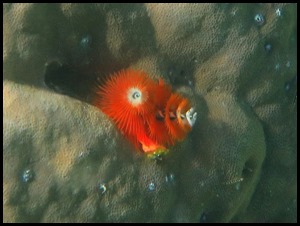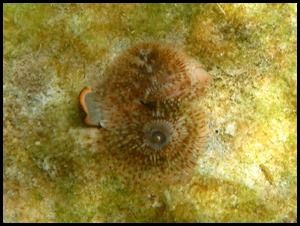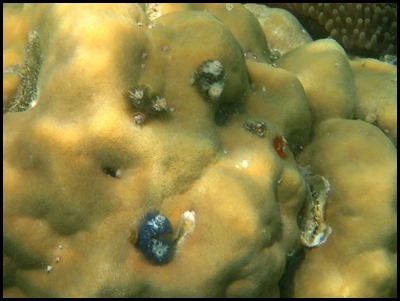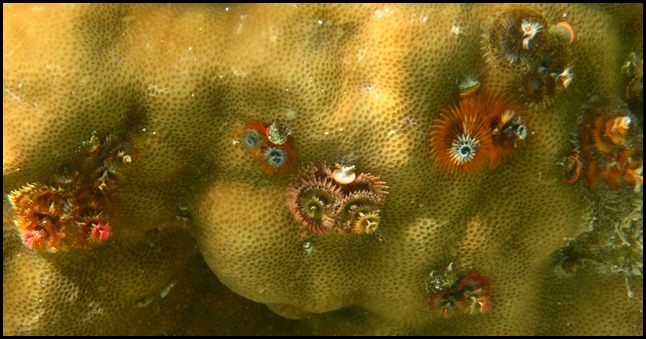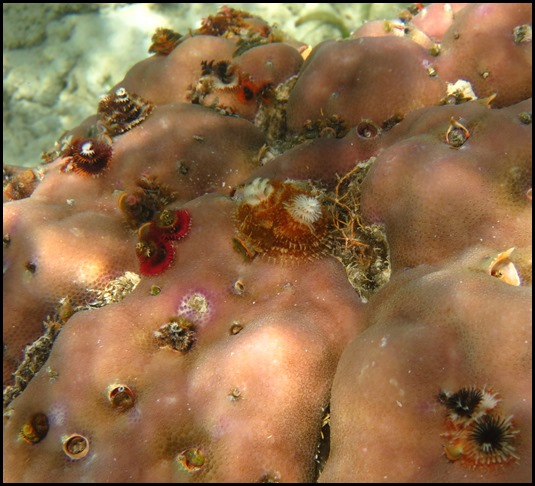Hoga Worms

|
Hoga Islands Christmas Tree Worms  During our snorkels off Hoga Island we saw
so many worms they had to have their own blog. The brown
jobs were just the start of increasing our collection of colours.
There
are both male and female Christmas tree worms, Spirobranchus giganteus.
They reproduce by casting their eggs and sperm into the water. The eggs are
fertilised free-flowing, then develop into larvae that settle on coral heads
where they burrow into the coral to live out their lives (up to forty years)
with friends nearby.
 The colourful plumes, or tentacles, are used for passive feeding on suspended food particles and plankton in the water. The plumes are also used for respiration. Though the plumes are visible, most of these worms are anchored in their burrows that they bore into live calcareous coral. Christmas tree worms are very sensitive to disturbances and will rapidly retract into their burrows at the slightest touch or passing shadow. They typically re-emerge a minute later, very slowly, to test the water before fully extending their plumes. They prefer living in shallower water ranging in depth from ten to a hundred feet.
Christmas tree worms are polychaete ciliary feeders that feed using their radioles, the hair-like appendages or "feathers" that circle outward from the central spine, to catch phytoplankton floating by in the water. The food is then passed down a food groove by ciliary tracts — lines of tiny hair-like extensions on the surface of cells that generate water currents to move food or mucus. The food particles are sorted and larger particles are discarded. Sand grains are directed to storage sacs to be used later for tube building. Time to simply enjoy them.

ALL IN ALL INCREDIBLE LITTLE CREATURES VERY, VERY COLOURFUL |



